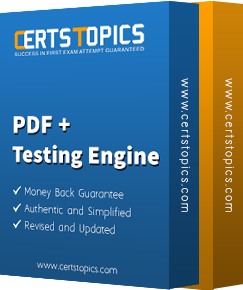Essay Plan:
Definition of Stakeholder- someone who has a ‘stake’ or interest in the company. A person or organisation who influences and can be influenced by the company.
Categories of stakeholders:
1) Internal Stakeholders- these people work inside the company e.g. employees, managers etc
2) Connected- these people work with the company e.g. suppliers, mortgage lenders
3) External Stakeholders – these people are outside of the company e.g. the government, professional bodies, the local community.
Example Essay:
A stakeholder is an individual, group, or entity that has a vested interest or concern in the activities, decisions, or outcomes of an organization or project. Stakeholders are those who can be affected by or can affect the organization, and they play a crucial role in influencing its success, sustainability, and reputation. Understanding and managing stakeholder relationships is a fundamental aspect of effective organizational governance and decision-making and there are several different types of stakeholders.
Firstly, internal stakeholders are those individuals or groups directly connected to the daily operations and management of the organization. Internal stakeholders are key to success and are arguably more vested in the company succeeding. They may depend on the company for their income / livelihood. Anyone who contributes to the company's internal functions can be considered an internal stakeholder for example:
This category includes
1) Employees: With a direct influence on the organization's success, employees are critical internal stakeholders. Their engagement, satisfaction, and productivity impact the overall performance.
2) Management and Executives: The leadership team has a significant influence on the organization's strategic direction and decision-making. Their decisions can shape the company's future.
Secondly, connected stakeholders are those individuals or groups whose interests are tied to the organization but may not be directly involved in its day-to-day operations. Connected stakeholders work alongside the organisation and often have a contractual relationship with the organisation. For example, banks, mortgage lenders, and suppliers. These stakeholders have an interest in the business succeeding, but not as much as internal stakeholders. It is important to keep these stakeholders satisfied as the organisation does depend on them to some extent. For example, it is important that the organisation has a good relationship with their bank / mortgage provider/ supplier as failing to pay what they owe may result in the stakeholders taking legal action against the organisation.
This category includes:
1) Shareholders/Investors: Holding financial stakes in the organization, shareholders seek a return on their investment and have a vested interest in the company's financial performance.
2) Suppliers and Partners: External entities providing goods, services, or collaboration. Their relationship with the organization impacts the quality and efficiency of its operations.
Lastly external stakeholders are entities outside the organization that can influence or be influenced by its actions. This category includes anyone who is affected by the company but who does not contribute to internal operations. They have less power to influence decisions than internal and connected stakeholders. External stakeholders include the government, professional bodies, pressure groups and the local community. They have quite diverse objectives and have varying ability to influence the organisation. For example, the government may be able to influence the organisation by passing legislation that regulates the industry but they do not have the power to get involved in the day-to-day affairs of the company. Pressure groups may have varying degrees of success in influencing the organisation depending on the subject matter. This category includes:
1) Customers: With a direct impact on the organization's revenue, customers are vital external stakeholders. Their satisfaction and loyalty are crucial for the company's success.
2) Government and Regulatory Bodies: External entities overseeing industry regulations. Compliance with these regulations is crucial for the organization's reputation and legal standing.
In conclusion, stakeholders are diverse entities with a vested interest in an organization's activities. The three categories—internal, connected and external —encompass various groups that significantly influence and are influenced by the organization. Recognizing and addressing the needs and concerns of stakeholders are vital for sustainable and responsible business practices.
Tutor Notes
- The above essay is pretty short and to the point and would pass. If you want to beef out the essay you can include some of the following information for a higher score:
- Stakeholders can be harmed by, or benefit from the organisation (can affect and be affected by the organisation). For example a stakeholder can be harmed if the organisation becomes involved in illegal or immoral practices- e.g. the local community can suffer if the organisation begins to pollute the local rivers. The local community can also benefit from the organisation through increased employment levels.
- CSR argues organisations should respect the rights of stakeholder groups
- Stakeholders are important because they may have direct or indirect influence on decisions
- The public sector has a wider and more complex range of stakeholders as they’re managed on behalf of society as a whole. They’re more likely to take a rage of stakeholder views into account when making decisions. However, these stakeholders are less powerful – i.e. they can’t threaten market sanctions, to withdraw funding, or to quit the business etc.
- The essay doesn’t specifically ask you to Map Stakeholders, but you could throw in a cheeky mention of Mendelow’s Stakeholder Matrix, perhaps in the conclusion. Don’t spend time describing it though- you won’t get more than 1 point for mentioning it. You’d be better off spending your time giving lots and lots of examples of different types of stakeholders.
- Study guide p. 58


